What Is The Best Color For Your Child’s Bedroom?
There are many reasons why it’s time to re-paint your child’s room. You already moved or are about to move into a new home, your child got tired of the current color, or you are awaiting a new baby.
If you have ever painted a room you know it is not an easy task. So before you decide to paint your child’s room, you want to make sure they don’t outgrow it within the next few months. Here is an overview of the best and worst colors for your child’s bedroom.
Why is choosing the right color for your child’s bedroom important?
Research has shown that children’s mood is strongly influenced by their surroundings, and that includes the colors in their rooms. That is one reason why more and more classrooms are painted in bright colors like an energizing yellow or soothing green. There is a good chance that these colors were carefully chosen because they positively affect the students.
And then there is functionality. While you, as a parent, use your bedroom only for sleeping, your child is using his or her bedroom to play, study, and sleep. As some colors tend to calm and relax and others to energize and stimulate, it is essential not to underestimate the importance of choosing the right color for your child’s room. This is especially true for children who are particularly sensitive to the effects of color.
However, generalizations do not apply to every child. While we know a lot about how color affects our minds and bodies, we have to remember that every child is different.
So, with that in mind, what are the best colors to encourage your child to play and study, and at the same time, let them climb happily into bed at night? Here is what to consider when choosing the right color for your child’s bedroom.
Warm colors
In most people, warm colors inspire happiness, coziness, and comfort. They can also make large, open spaces more intimate. Of course, this doesn’t mean that you limit the use to only warm colors. Instead, use pure warm tones as a neutral basis for some brighter shades.
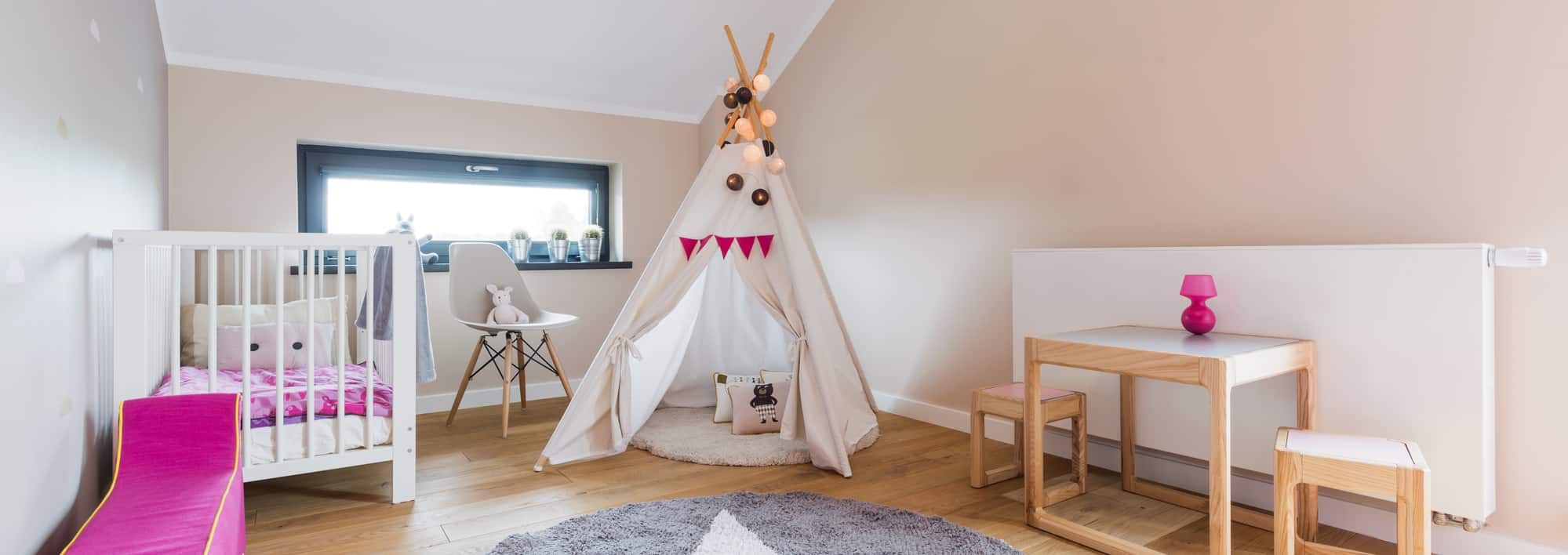
Cool colors
You may associate cool colors with sterile, hospital-like environments, but lighter, cooler colors can have a soothing effect on you and your child. Besides, many of these colors help make small rooms appear larger. As pure white may feel a little strong, add some shades of eggshell tones to achieve some softness and contrast. Also, choose comfortable and cuddly textiles to give the room a warm feeling.
Red
Red can energize the body and stimulate the mind, thereby increasing heart and respiratory rate. However, an over-exposure to red can promote aggressive behavior and an inability to focus. Conclusion: Red is excellent as an accent but is not suitable as wall paint in a children’s bedroom.

Orange
As long as it is not too bring, orange is a warm and friendly color and actually ideal for children. Because it’s said to promote trust, extroversion, and independence. Orange also has a calming effect on children and inspires communication and collaboration with visiting friends.
However, as with any warm color, too much orange can overwhelm your child. That’s why orange is best suited as an accent color, especially the softer shades of orange. Try combining orange with smooth green or neutral cream color.
Yellow
Most of us associate yellow with happiness. Studies have also shown that this bright and cheerful color is motivating. Softer yellow tones can enhance concentration, while lighter ones are said to improve memory.
While yellow gives your child’s room a positive and sunny vibe, be careful to use too much bright yellow. Especially if you have a child who tends to fight bedtime or wake up early, yellow is likely to make this problem worse. If a bedroom has too much of an energizing vibe, your child might become overstimulated and struggles to calm down.
Yellow is a perfect accent color when balanced with grey, green, or blue. This mix allows the positive effects of yellow to shine through without making your child feeling irritated or angry – as may be the case with an excess of yellow.
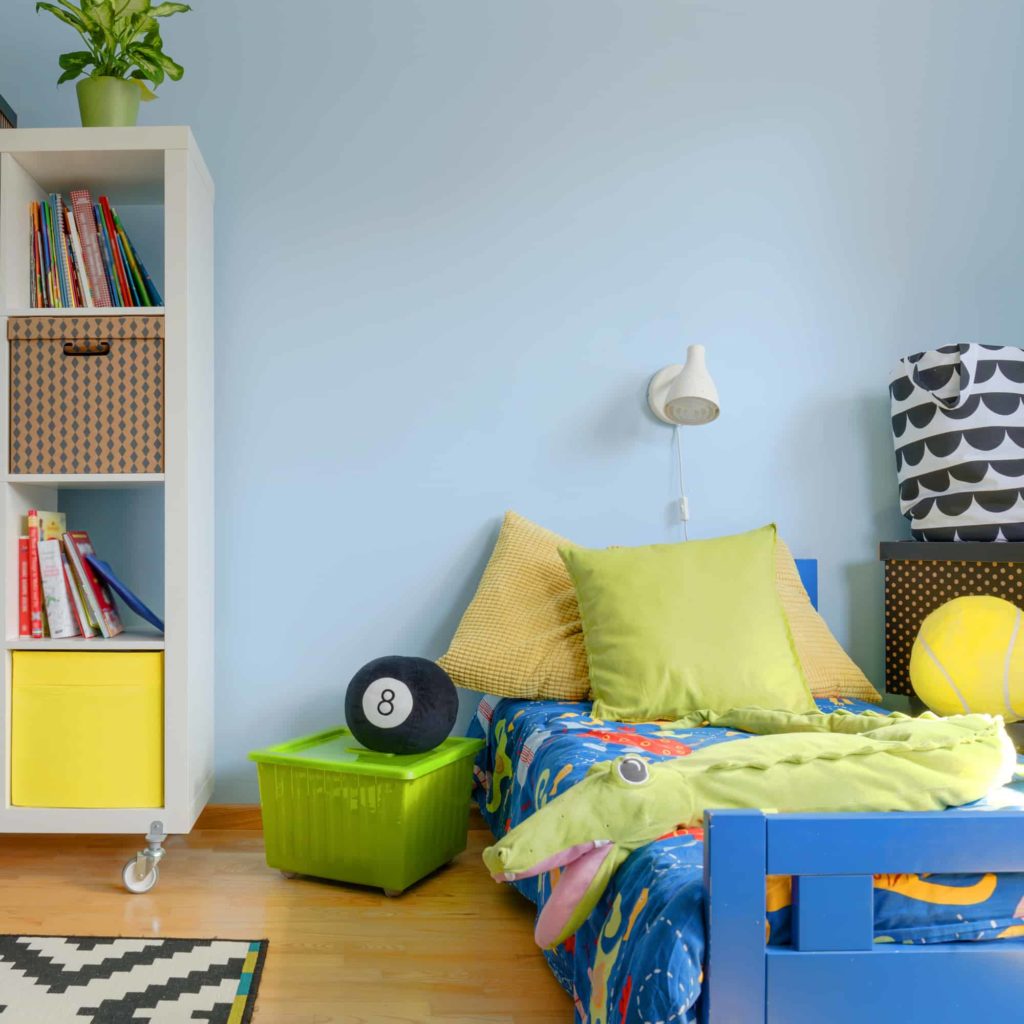
Green
This natural color has a soothing effect on the child, while it also promotes concentration and understanding. So if your child does most of his homework in his room, green can be an excellent choice. Also, if your child likes his or her bedroom in complete green, go for it. There is no need to reduce this anxiety-reducing color to a minimum.
However, as with any cool color, the darker the shade, the gloomier the room. While a dark forest or pine green is strongly sleep-inducing, it might be a little depressing. Better is to choose a lighter shade such as mint or tea green.
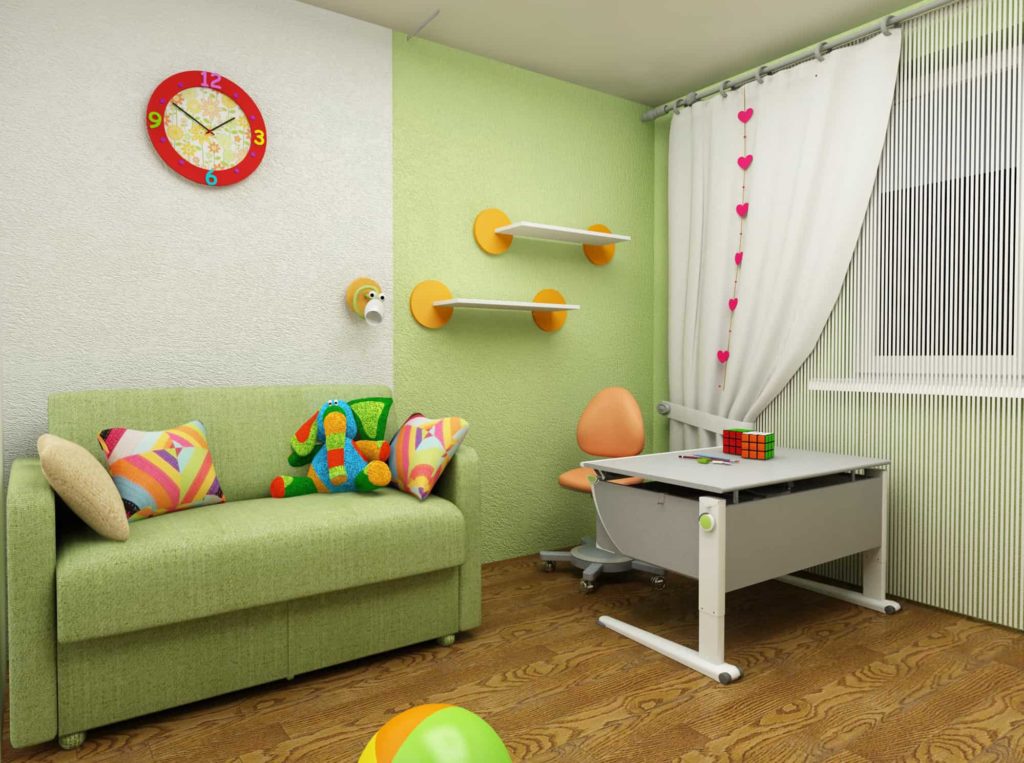
Blue
Blue has the opposite effect of red. Blue is a relaxing color with the ability to lower the heart rate and blood pressure as well as to slow the breathing when someone is agitated. It also reduces feelings of anxiety and aggression. Children who have uncontrolled outbursts of anger and frustration or other behavioral problems can appreciate the calming effect of a blue room. So it is not only for a boy’s bedroom; both sexes can benefit from being surrounded by this soothing color.
Just make sure you don’t go overboard. Creating a room overwhelmed with blue can exceed the calming effect and lead to a more depressing effect. Try to balance blue with a curtain in warm yellow or some red cushions.
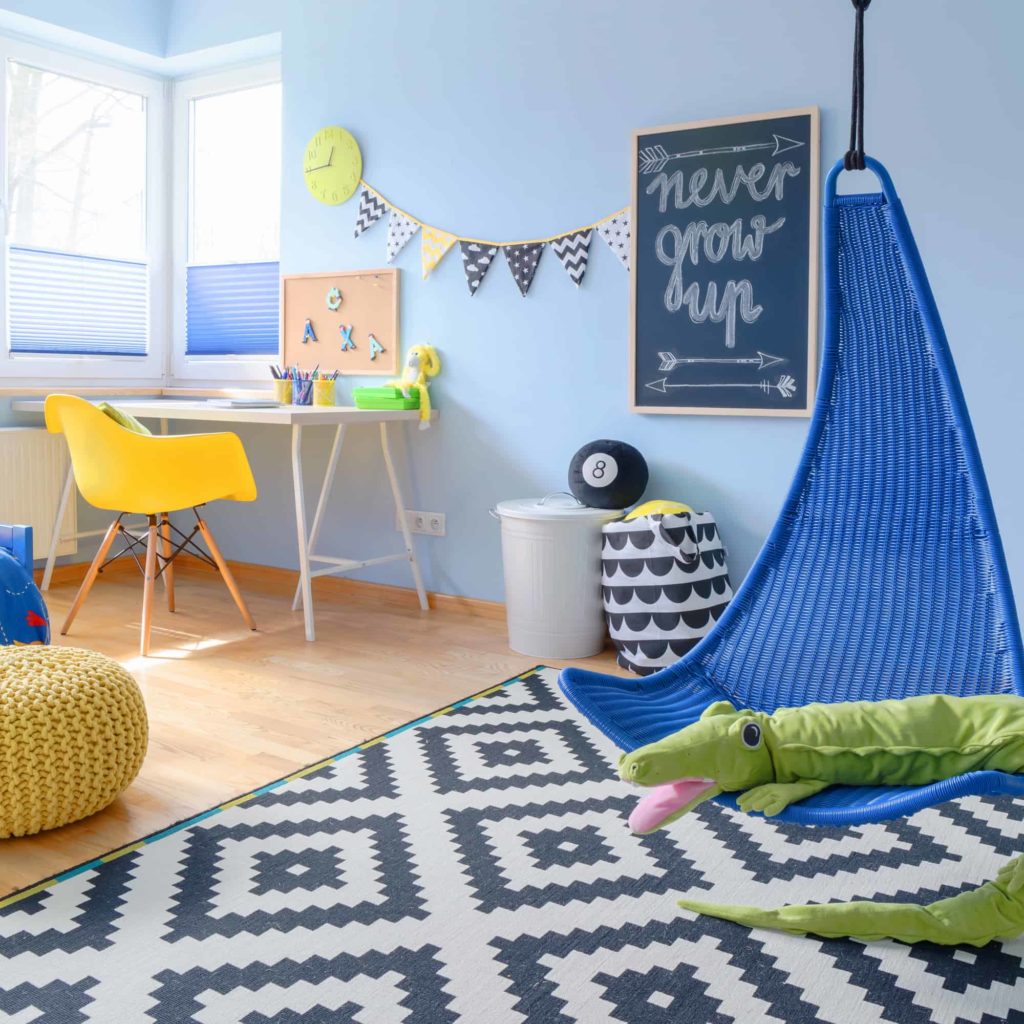
Pink
Although it is usually associated with a typical girl’s bedroom, pink in smaller doses has a calming effect on both sexes. If it’s not hot pink, pink is soothing and promotes feelings of empathy and care. It can make children behave more caring and considerate.
However, any child can quickly grow out of too much pink, so try combining pink textiles with a more neutral background.
Purple
That’s a tough one. Purple is a color that’s said to inspire thoughtfulness, sensitivity, and spirituality. However, making purple the dominant color in your child’s room can lead to sad feelings, and even a bit of physical sluggishness. Better is to leave it only to one wall and maybe to neutralize purple with some white or light grey shades. Or use purple only for the accents, especially if your child is already sensitive.
Gray
I think grey is often underrated for children’s bedrooms. Of course, using grey as a dominant color, especially in a darker shade, is a bit depressing and may leave your child feeling lonely. But when used in moderation, grey can also be a striking accent color, which can help balance out a light yellow room. Or it can break up an overwhelming color scheme like turquoise or magenta.
If you want to use grey as the dominant color, use a light shade that is warm and cozy (see next). Same as s classic sand color, light grey is neutral enough to function for several years until your child begins to explore his or her own personal style.
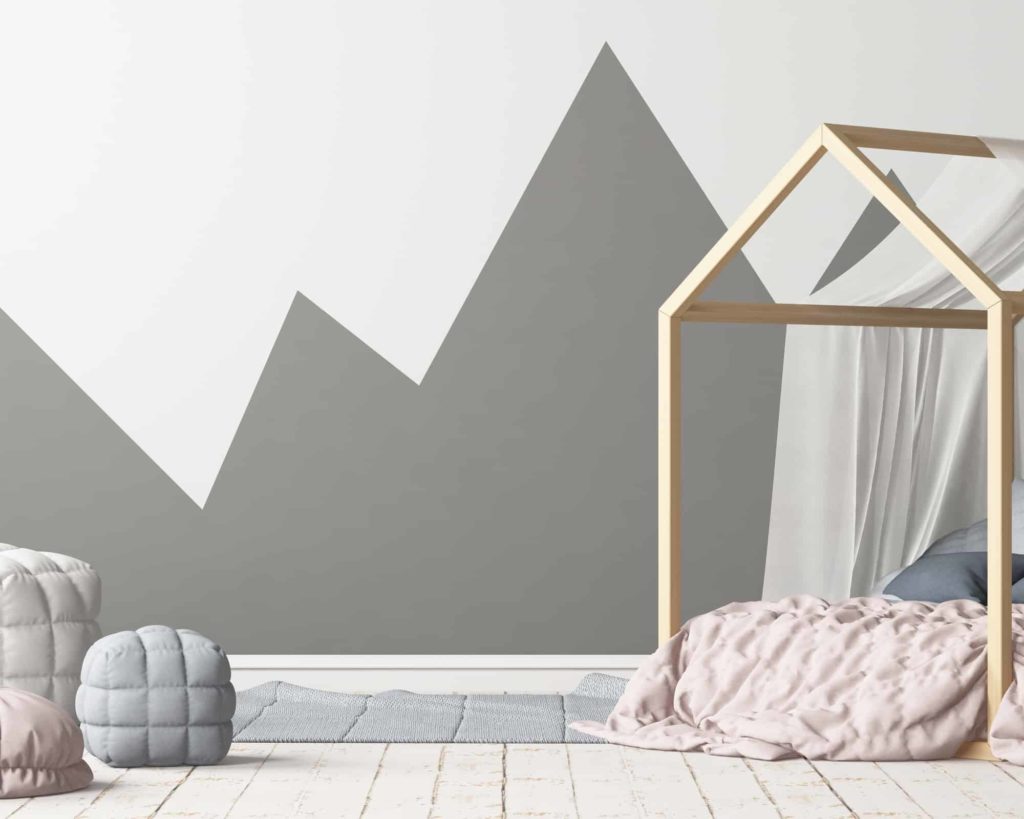
Which colors are suitable for shared rooms?
If you have a daughter and son sharing a bedroom, the easiest way to make the room attractive for both children is to use neutral color shades for walls, flooring, and furniture. Then add color pops with bedding and accessories.
Bright colors are a must in the children’s room. However, if you want to avoid the stereotypical girls’ or boys’ shades, have a neutral background in e.g., creamy white, to keep the overall atmosphere under control. Then mix it with stains of citrus green, bright yellow, bright orange.
Remember, just because a room doesn’t cry out, “I’m a girl!” or “I’m a boy!” doesn’t mean it can’t be colorful, cute, and individualized. Make it a project and decorate the room together with your children. Let each child choose his or her own bedding and a few accessories. If both share a favorite theme like, for example, wild animals, tropical forests, or ocean life, include that plus the corresponding colors.
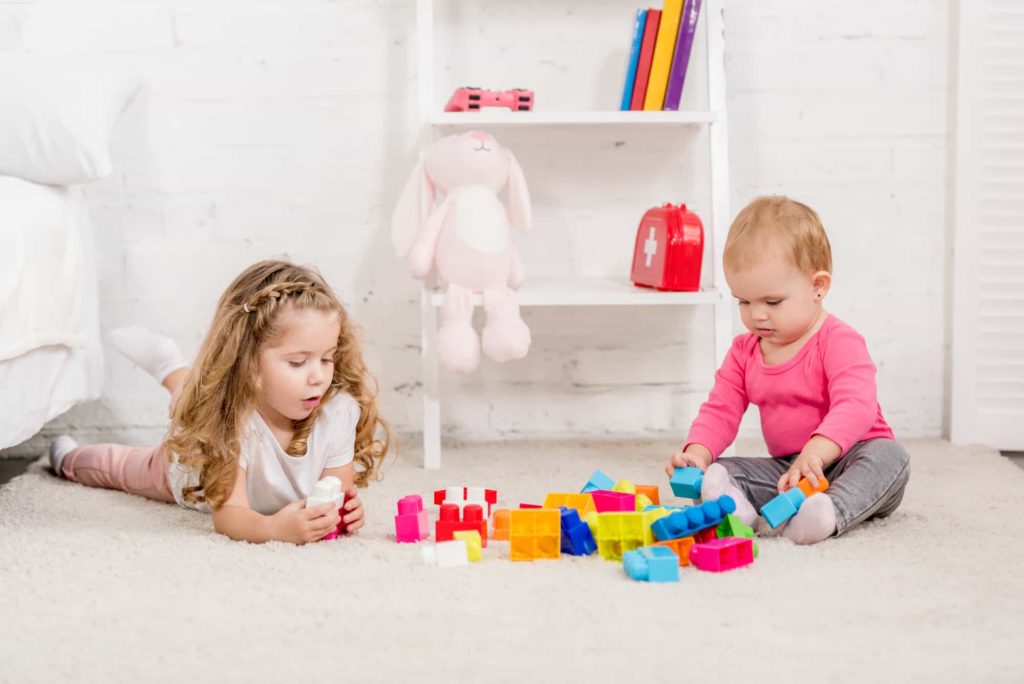
What else is important?
Always choose non-toxic paint. Environmentally friendly colors are the right choice for your child’s room. They don’t contain any of the volatile organic compounds (VOCs) that standard paints have. They are manufactured from all-natural materials such as clay, lime, and milk, and are practically odorless. Especially if your child is prone to headaches or allergic reactions, non-toxic paint is a must.
As always, your suggestions for the wall colors of a child’s room were excellent!